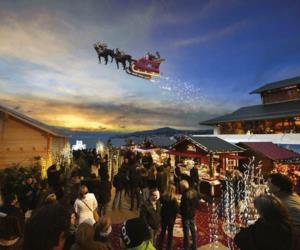The Everest region is home to some of the most famous trekking trails in the world. Among them, the Everest Three Pass Trek stands out as one of the most challenging and rewarding adventures in Nepal. If you're wondering about the Everest Three Pass Trek difficulty, you're not alone. Many trekkers ask this before deciding to take on the journey.
This trek is not for beginners, but it is a dream route for experienced hikers. It offers breathtaking views, peaceful trails, and a full experience of the Everest region. But before you lace up your boots, it’s important to understand what makes this trek tough and how you can prepare.
文章重點
What is the Everest Three Pass Trek?
The Everest Three Pass Trek is a circular route in the Everest region. It connects three high mountain passes: Kongma La (5,535m), Cho La (5,420m), and Renjo La (5,340m). Along the way, trekkers visit Everest Base Camp, Gokyo Lakes, and several remote Sherpa villages.
Unlike the standard Everest Base Camp trek, the Three Pass Trek is longer, higher, and more remote. It usually takes around 18 to 21 days to complete. The route is less crowded, and the mountain scenery is simply stunning.
Is the Everest Three Pass Trek Difficult?
Yes, the Everest Three Pass Trek is considered very difficult. It is one of the toughest trekking routes in Nepal. This is due to its high altitude, long walking days, and the steep, rocky paths across the passes.
However, with proper preparation and experience, many trekkers complete it successfully every year.
Here are the main reasons why the trek is challenging:
High Altitude
The biggest challenge is the altitude. All three passes are above 5,300 meters. At this height, the oxygen level is much lower, and the risk of altitude sickness is real.
Acclimatization is very important. Trekkers must take rest days, walk slowly, and stay hydrated to avoid getting sick.
Long and Tough Days
Some days on the trek are very long and tiring. It can take 8 to 10 hours to cross a single pass. The trails are often steep and rocky. Snow or ice can make them even harder, especially in colder months.
You need strong legs, good stamina, and a positive mindset to keep going.
Weather Conditions
The weather in the Everest region can change quickly. Even in the best seasons, trekkers may face strong winds, snow, or cold nights.
Spring (March to May) and autumn (September to November) are the best times to go. These months usually have clear skies and stable weather.
Remoteness
This trek goes through remote parts of the Khumbu region. That means fewer facilities, limited access to medical help, and more self-reliance. You must be well-prepared with proper gear and a reliable guide or team.
Who Should Do This Trek?
The Everest Three Pass Trek is best for experienced trekkers who are comfortable at high altitudes and enjoy a physical challenge. It is not suitable for beginners or those with health problems related to altitude.
If you have done other treks above 4,000 meters and are looking for your next big adventure, this could be the right choice.
How to Prepare
Train well in advance. Include hiking, cardio, and strength workouts.
Learn about altitude sickness and how to prevent it.
Choose a trusted guide or trekking company.
Pack warm clothes, good boots, and essentials like water purifiers and snacks.
Give yourself extra days for acclimatization.
Final Words
The Everest Three Pass Trek is tough, but it is also one of the most rewarding treks in the Himalayas. You get to see the best of the Everest region while walking quiet trails through wild and beautiful landscapes.
If you’re well-prepared and up for a challenge, the trek will leave you with memories that last a lifetime. The views from the top of the passes, the experience of walking through remote villages, and the feeling of completing such a hard trail make it truly special.





